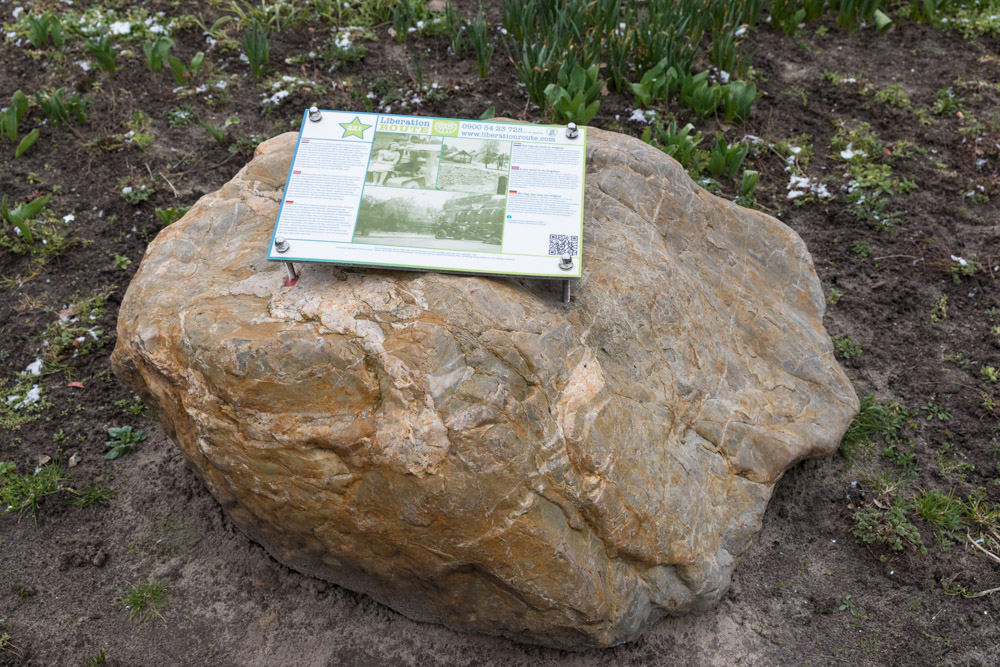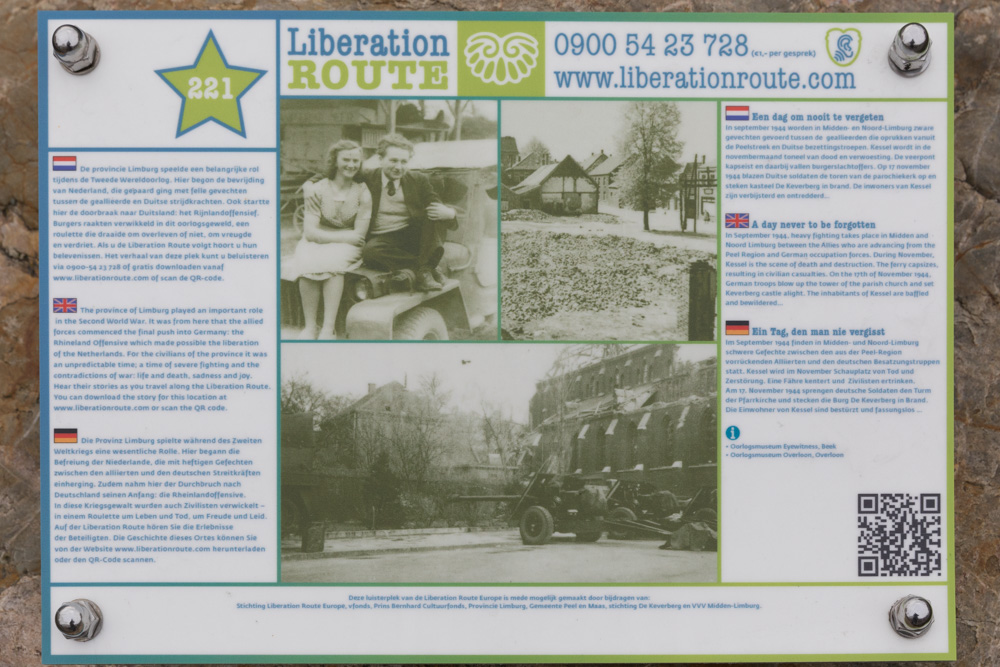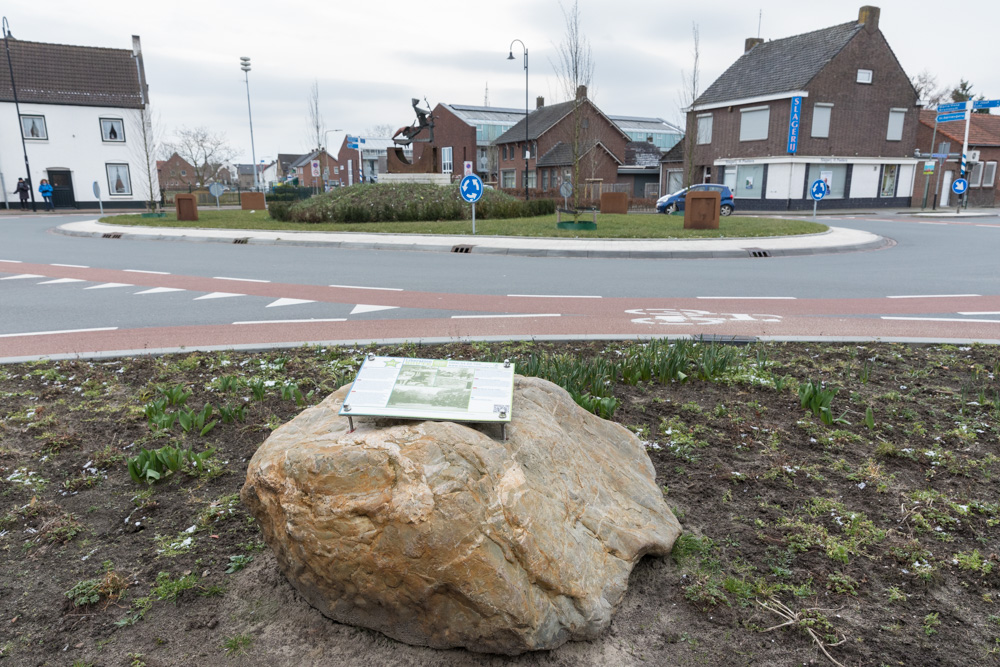Liberation Route Marker 211: Nightmare in Montfort
Nightmare in Montfort
In the middle of January 1945, the fight for liberation broke out in the Rur region. After a sequence of ferocious battles, the German troops took up positions in Montfort. This led to allied attacks day in, day out, with terrified civilians and evacuees forced to hide en masse in their cellars for days on end. Eventually, the British Cromwell tanks arrived…
Operation ‘Blackcock’ started on 16th January 1945 with the aim of clearing the area between the Maas and Roer rivers, along the Maaseik – Sittard – Linnich – Roermond line, of enemy troops.
During the first phase of the attack, under the codename ‘Angel’, the 5th Royal Inniskilling Dragoon Guards made excellent progress until they reached the village of St. Joost. This was where the paratroopers of the 24th Fallschirmjäger Regiment Hübner had come to the aid of the exhausted soldiers of the 176th Infantry Division in their battle against the British. Heavy fighting ensued, and when the Germans realised they could no longer defend their position, they retreated to Montfort.
The battle to capture the villages of Linne and Montfort was codenamed ‘Dolphin’. The Fallschirmjäger regarded themselves as elite soldiers and had been given strict orders to defend Montfort at all cost. Over the next 24 hours, the British soldiers, the local population and dozens of evacuees bore the brunt of their fanaticism.
When the British approached the village in their Cromwell tanks on 22nd January 1945 at 5 o'clock in the afternoon, Montfort was covered in snow. It was cold and freezing, and it had already started to get dark. The first two tanks slid cautiously towards the ‘Aandenberg’ crossroads. Then the Germans opened fire from their well-protected positions, and all hell broke loose. Before they knew it, the first of the tanks commanded by troop leader de Grey, had been hit by a German Pantzerfaust and engulfed in flames.
Audiospot - Nightmare in Montfort
Liberation Route Europe is a certified Cultural Route of the Council of Europe. With hundreds of sites and stories in nine European countries, the route links the main regions along the advance of the Allied Forces in 1943-1945.
The entire route consists of themed routes that can be travelled by by hiking, walking, cycling and car. These routes pass numerous historical and interesting sites and tell stories from a multitude of perspectives that were important in the final phase of World War II.
Many routes feature listening spots, offering the opportunity to listen to a historical story at a location. In addition, many ‘Vectors of Memory’ have been placed, indicating that the passer-by is on one of the Liberation Routes.
The routes can be found on the Liberation Route Europe website or in the app through which many stories can also be listened to.
Do you have more information about this location? Inform us!
Source
- Text: TracesOfWar & Liberation Route Europe
- Photos: Arjan Vrieze
Nearby
Museum
Point of interest
- Bunker Chapel Abbey Lilbosch Echt - Echt
- Abbey Lilbosch Echt - Echt
- Former House German Officer Echt - Echt
Monument
- Liberation monument Montfort - Montfort
- Memorial Recce Squadron 5th Royal Inniskilling Dragon Guards - Montfort
- Memorial Henry Eric Harden VC - Maasbracht
Cemetery
- Mass Grave Victims of Bombing Municipal Cemetery Montfort - Montfort
- Belgian War Grave Municipal Cemetery Montfort - Montfort
- Dutch War Graves Montfort Municipal Cemetery - Montfort
Remembrance Stone
- Stumbling Stones Bovenstestraat 48 - Echt-Susteren
- Stumbling Stones Scheidingsweg 118 - Roermond
- Stumbling Stones Kapellerlaan 60 - Roermond






